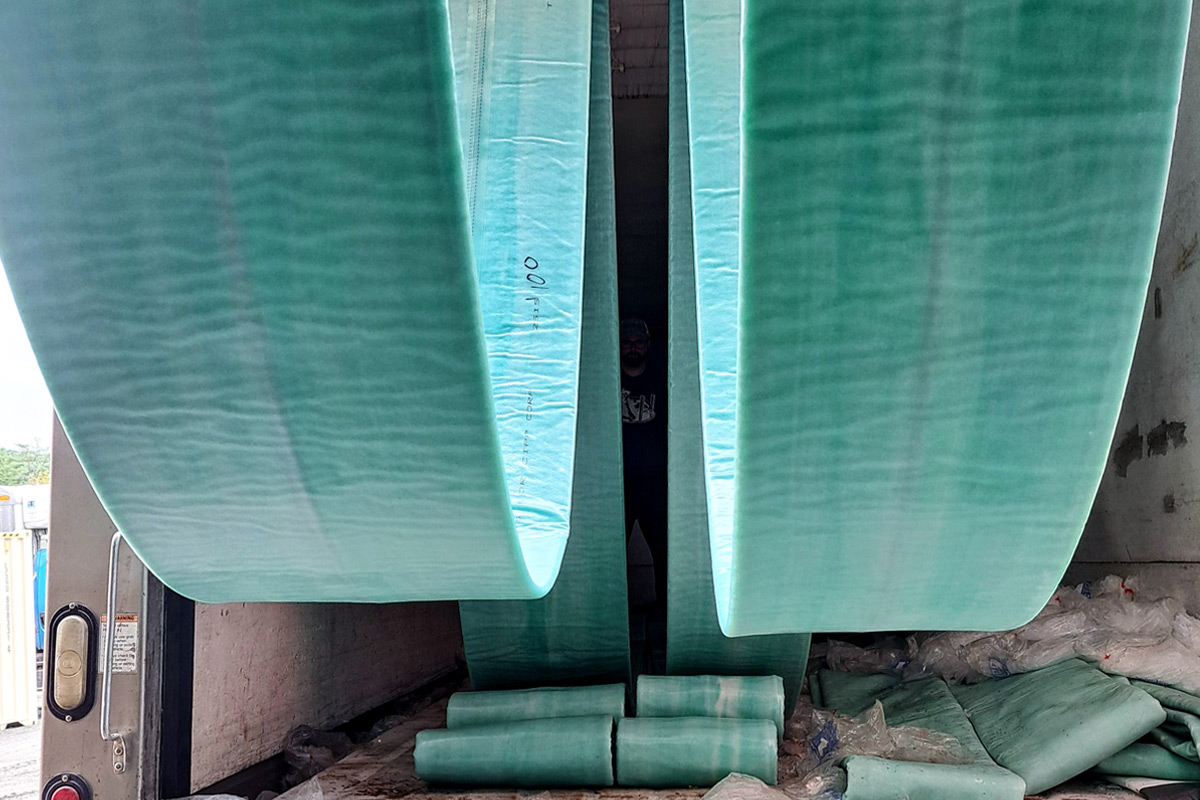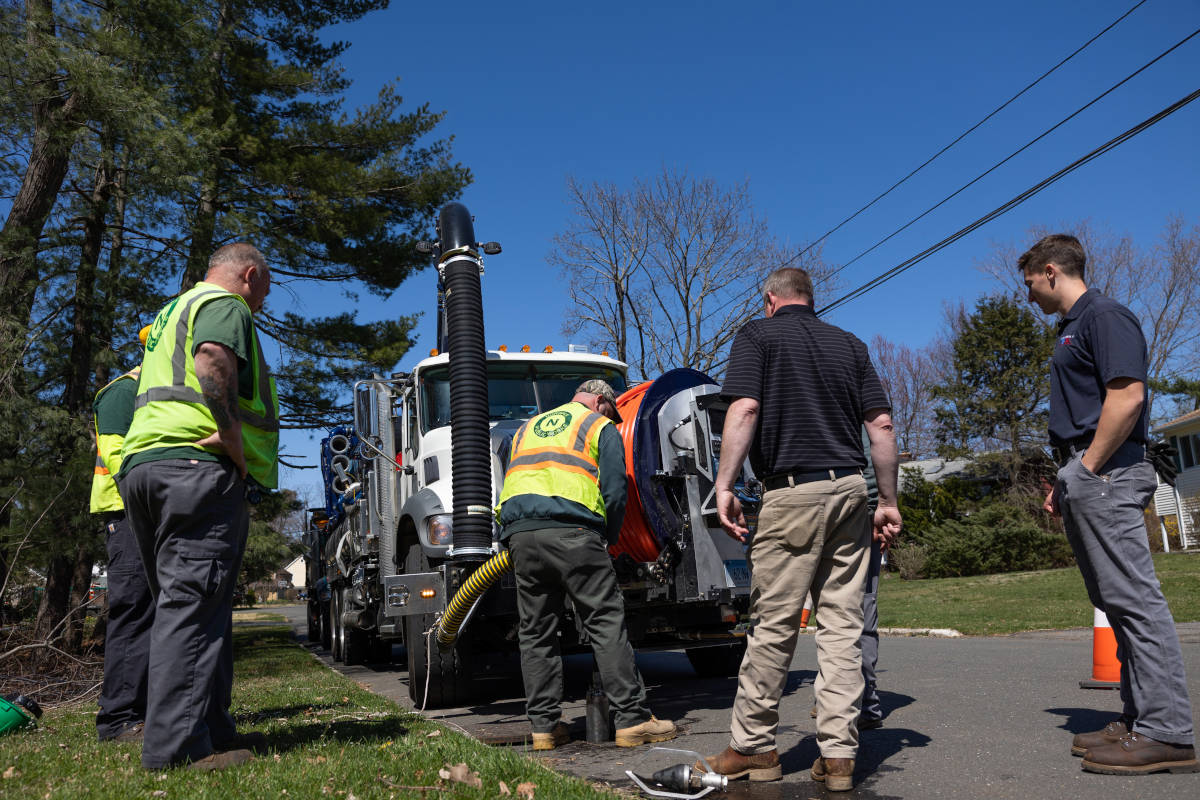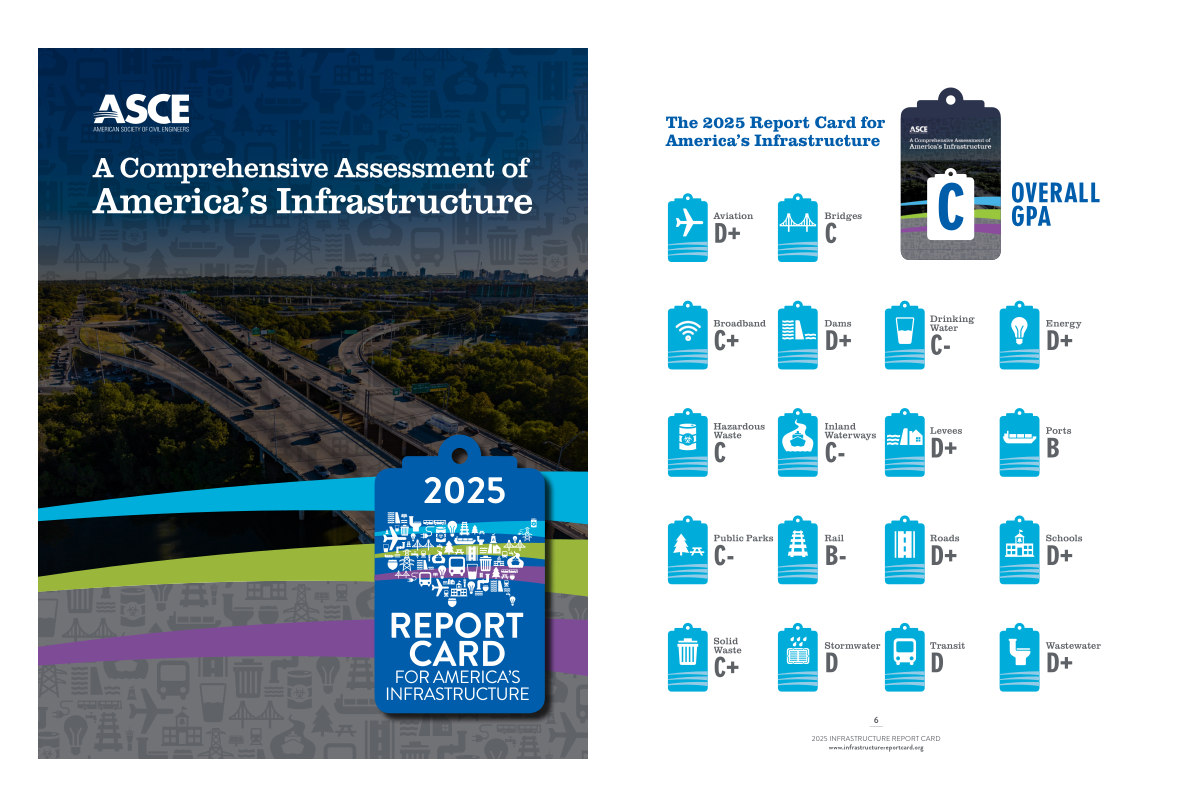
More Than Manholes: AP/M Permaform Grows into Trenchless Solutions Provider
January 18, 2016
Trenchless technology and AP/M Permaform president Bill Shook go together like beer and pretzels or bacon and eggs or peanut butter and jelly. You get the idea.Shook and his company have been pounding the pavement since the 1980s, extolling the benefits and basic common sense that using trenchless rehabilitation will help fix what is ailing the more than 20 million U.S. manholes that the EPA says are in dire need of repair.
Shook and AP/M Permaform started out at a time when the words trenchless technology were met with a blank stare and manholes were virtually ignored by the cities and officials entrusted in their care. Not anymore — times have changed. The Johnston, Iowa-based company has grown in to a leader in the manhole rehabilitation field, providing a network of trenchless solutions and Certified Applicators for manholes, culverts and large diameter sanitary sewers for North America and around the globe.
“I’ve often said that it’s taken us about 20 years to become an overnight success,” Shook says of the company’s leadership position within the industry. “It’s been a lot of hard work. We created this business because we saw a need in the marketplace and we developed the technology to fill it.”
AP/M vice president and general manager Keith Walker has been with the industry and company since 1996 and marvels at the growth of both during that time. Not only in size and acceptance of the trenchless options but in how technology and software have impacted business as a whole during that time.
“There is definitely a better awareness that manholes are a structure within the collection system that need to be looked at and evaluated,” Walker says. “They are one of the easiest segments of the collection system to get to yet it was really one of the last segments that anyone bothered to look at fixing. They really contribute to the majority of the infiltration that you will see in a system, either from around the drop inlet, leaks around the mainline or missing brick mortar joints. You get a manhole sealed, you are eliminating a lot of the infiltration in that area.”
A lot has changed in the industry since AP/M opened its doors. Technology and software have improved the quality and speed that the work is done in, as well as how relationships between company and client operate. Internet, social media, smart phones, real-time video software programs — everything is for the better, Walker says.
“I remember when things arrived in the mail and how cool was the fax machine?” he says. “We now have search engine filters that send us reports each morning about potential jobs. You can now search what projects are in the planning phases. We are able to gather that information quickly, which has been beneficial to our marketing efforts. We can get our educational message or product information out quickly and immediately to potential customers. The speed of contact has improved the sales cycle process for everybody.”

Leading the AP/M team are (l-r) Joe Cherry, sales and marketing manager, Bill Shook, president, and Keith Walker, vice president and general manager.
Company History
Shook acquired Action Products Marketing from Carroll Trimble in 1987, a company that manufactured the steel forms used in the Permaform process, thus becoming AP/M Permaform. The creation of AP/M Permaform occurred just as a little known industry called trenchless technology was taking off. Shook’s background prior to creating his company was in the water and sewer supply business, which gave him a firsthand view to what the cities and city engineers were dealing with regarding underground infrastructure, as well as seeing what was being done — and what wasn’t. At that time, it was dig-and-replace; most people had not even heard of trenchless technology and even fewer were using it.
“In the 1980s, cured-in-place pipe (CIPP) was really just launching but that just addressed the pipes. There wasn’t anybody doing anything of substance in manholes,” Shook says. “The practice at the time was to put on two coats of masonry finish inside a manhole. There was nothing structural about it. The idea was to try to waterproof the manhole.”
Shook realized that a better way was needed to stop this focal point of infiltration. Take care of the manholes through sealing and reinforcement and you are preventing a major force in I/I in your sewer system. His solution was his patented Permaform system, which uses segmented steel forms assembled inside the existing manhole and fitted with a PVC or PE plastic liner. High-strength concrete is poured between the existing structure and the plastic–lined forms. The locking anchors on the liner become embedded into the new concrete forming the protective barrier on the new interior wall, creating a manhole-within-a-manhole.
A few years later, Permacast was introduced to the market. This system is a patented family of mortars and epoxies engineered specifically for manholes using its unique SpinCaster method to ensure uniform and consistent application. After pressure washing the manhole wall to remove loose materials, the SpinCaster is lowered and raised within the manhole to provide the rapid centrifugal casting of mortar and/or epoxy onto the interior surface.
In 1996, AP/M introduced another product to the trenchless market, ConShield, an anti-microbial admixture that protects against corrosion by preventing bacterial growth on the concrete surfaces.
“Everything we develop goes back to the very thing we founded our business on: recognizing a need in the marketplace and filling it,” Shook says. “With the Permacast system, it was the same thing. There were some people just starting out with hand spraying the wall and troweling (the mortar and/or epoxy) in place. We didn’t think that was the best and most cost-effective way to do it. We thought centrifugally casting in place for a uniform compacted liner was a much better solution.”
In the early days of the company, Shook was a fixture at the trenchless industry events, spreading the message of how to rehabilitate deteriorating manholes by participating in as many shows as possible. Key to AP/M’s growth was attending the 1990 International Society for Trenchless Technology (ISTT) conference outside of Washington, D.C., which unbeknownst at the time was a gathering of what would become pioneers of the trenchless industry.
“Some of the people who were involved early on in trenchless were exhibitors there,” Shook remembers, noting the small scale of the conference compared to today’s standards. “I think there were 20 exhibitors and we were one of them. We got a taste and a little exposure of what was going on in the international market and what the U.S. and North American markets were capable of at the same time. We started to grow from there.”
Creating a Network
From Day 1, AP/M was doing business on a national level, covering the United States from California to Massachusetts to Florida and Texas. Initially, AP/M had its own crews doing the work of its products; however, as demand for manhole rehab grew, Shook knew his limited crews couldn’t be everywhere the product was needed. He developed the idea of having a network of Certified Applicators, regional contractors that are trained and committed to using the AP/M suite of trenchless solutions wherever needed. To date, AP/M has 40 Certified Applicators that cover the United States and seven outside the borders, working in Singapore, China, Israel, Denmark, Germany, Ireland and India.
“We were on the cutting edge and remain on the cutting edge,” Shook says. “The way we are able to remain on the cutting edge is that we understand we have a direct link now with cities and city engineers through our regional applicators and we work to respond to what their needs are. We get direct feedback from the applicators who tell us what their clients want and need for every type of problem.”
Stormwater Needs
Stormwater rehab has been the focus of a lot of trenchless attention in recent years as the miles and miles of North American culverts and storm sewers are reaching the end of their intended lifecycle. AP/M realized this need more than 10 years ago, developing CentriPipe in 2003, which can be used to rehabilitate aging and deteriorating culverts, as well as large diameter sanitary sewer pipes based on adjustments to its vertical SpinCast method.
“The corrugated metal pipe used for culverts was the cost-effective product for county engineers and Departments of Transportation when they were constructed and had a design life of about 50 years. We are past 50 years for many of them so there are huge amounts of failing culverts in our system,” Walker explains. “There are some that are still going very well but a lot of them are badly deteriorated. When you have an interstate and you are talking about say 500 ft of 10-ft diameter CMP under that interstate, who is going to shut that highway down in order to replace the pipe? We came along at the right time when the need became evident and the funding was growing for the stormwater market.”
Research and Development and Giving Back
One of the keys of the success of any business is how well the company handles the research and development of its products and technology — are they leading the charge for new and innovative products or following those that do? AP/M is the former and continues to invest in R&D to ensure the future success of the company.
Shook and Walker believe the work AP/M has done with R&D for the trenchless industry is unparalleled to that of its competitors. They take pride in putting in hours and years into a product before bringing it to market and eagerly anticipate the next great AP/M discovery that will revolutionize the industry. AP/M recently brought in Triwater Holdings as investors, allowing the company to pump more money into its R&D efforts, and expanding its focus on long-range solutions.
“We’re not looking for Friday’s sale. We’re looking for next year’s sale and that doesn’t happen overnight,” Shook says. “What we will be doing five years from now will be different from what we are doing right now. We don’t see ourselves as just a manhole rehab product producer or materials manufacturer for lining pipe. We see ourselves as a company that identifies problems and develops solutions for those problems. Now (because of investors), we have practically unlimited resources to grow that technology to the next level.”
One area Shook and Walker believe to be imperative to the success of the industry as a whole, as well as to AP/M, is participation in industry associations, such as NASSCO, NASTT, AWWA and ASCE. They see these associations as critical arms of the industry that can reach and educate those who need the technology the most.
“The most damaging thing is when you have people who aren’t willing to make that commitment to quality. The thing we have done from Day 1 is be involved with ISTT, NASTT and NASSCO, because we see organizations like that and others as beneficial for the industry,” Shook says. “It takes volunteer work and commitment and the whole industry benefits from everybody contributing. If you can alert cities to understanding their needs in the marketplace, they will fund it.”
Shook and AP/M take part in as many industry conferences and tradeshows as they can — as both an exhibitor to share their products and an educator of the industry to help spread the trenchless word. Shook and his wife Miriam have been a very visible tandem at most of the events over the years. In 2015 alone, AP/M traveled to 95 tradeshows, Shook going to many of them.
“Now that we’ve got a nice size staff, there are more of us available to provide regionally focused personal care and attention to many of these local shows,” Shook says.
Trenchless Continues to Grow
As the trenchless market continues to grow, so does Shook’s enthusiasm for the industry as he sees the endless possibilities for the technology. “It’s big and it’s growing,” he says. “Cities cannot dig-and-replace all of the failing infrastructure that they have. It’s too costly. Cities also recognize the social disruption dig-and-replace presents and now look at trenchless as a first option, as the system of choice. That is what we have worked for all this time. [The trenchless industry] has made trenchless the system of choice.”
“We grew our company from within and we grew by perfecting and improving our technology in response to what the problems were,” Shook says. “Did I foresee that it would get as big as it is? I don’t measure our success in size. I measure our success on the impact we have had in the industry. Nobody was talking about manholes when we got in it. Nobody took the approach that we did to do the stormwater pipe lining. If you just look at the industry today, you will see other companies that are starting to enter in the very areas that we pioneered. I think that’s part of our legacy.”
Sharon M. Bueno is managing editor of Trenchless Technology.




